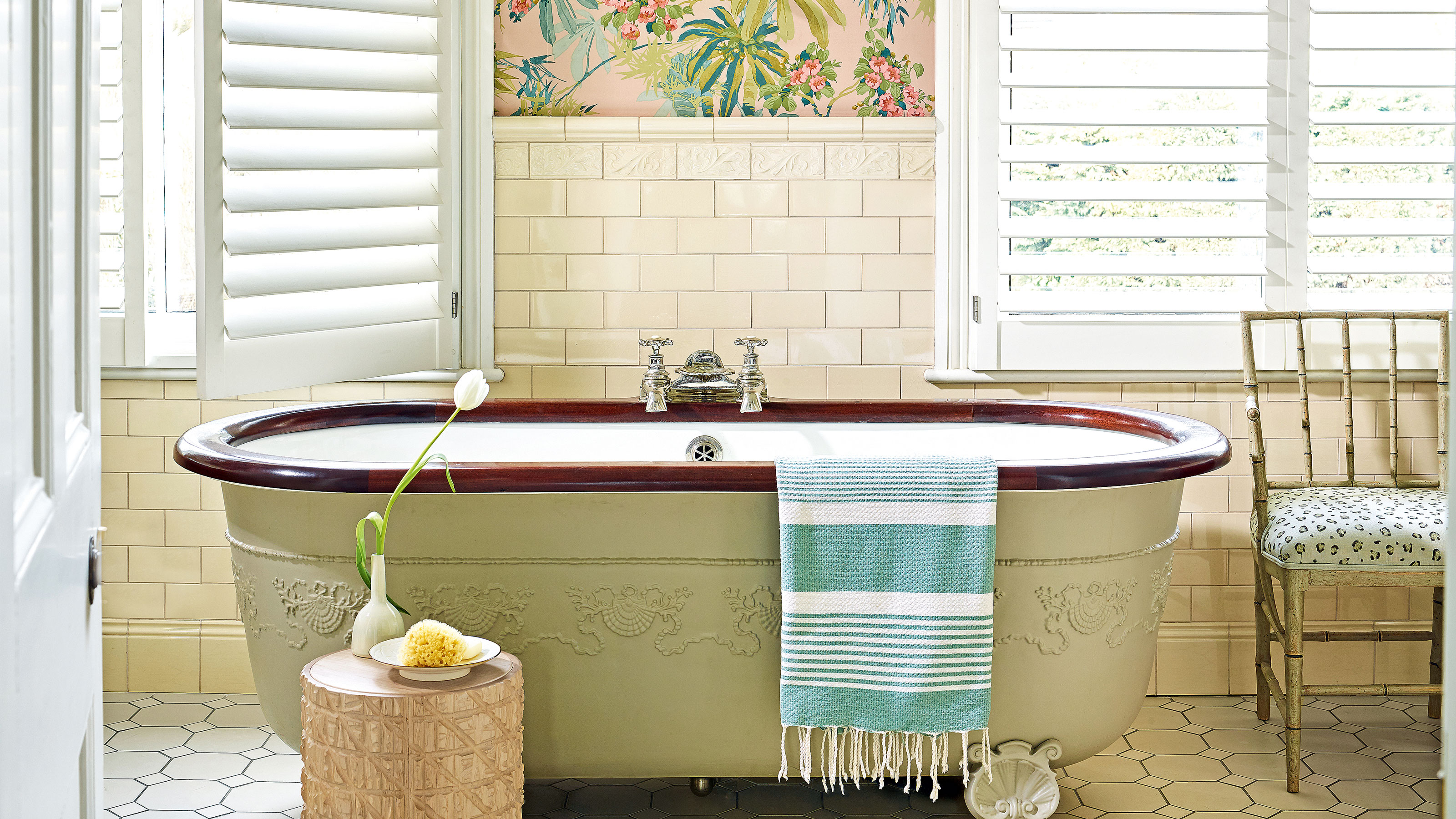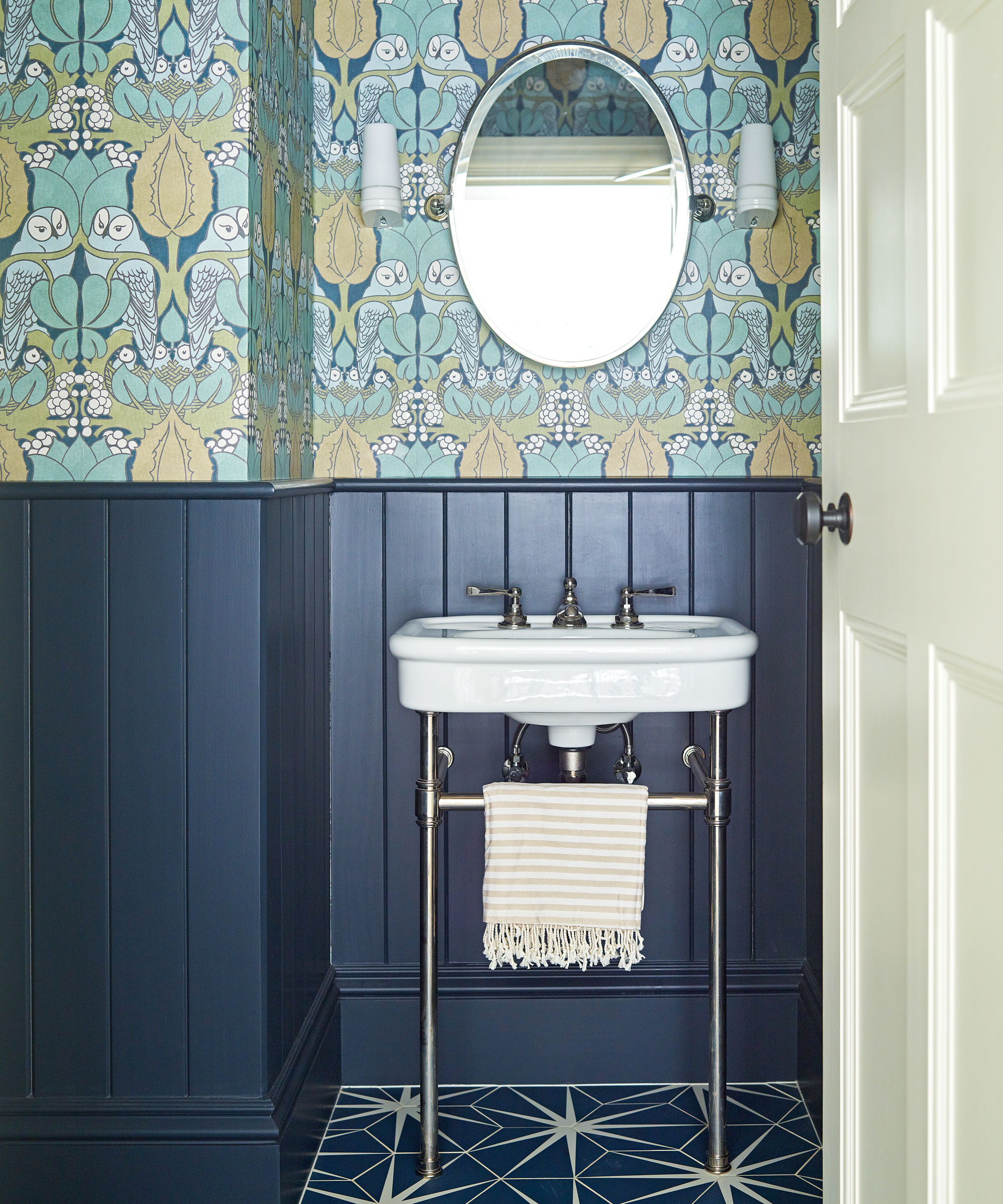5 bathroom cleaning hacks that don't work – and what to try instead
Cleanse your space quickly and easily with these suggestions


Whether you watch TikTok cleaning hacks with no intention of trying them or have adopted various new cleaning tips and tricks into your everyday life, we all know some bathroom cleaning hacks just don't work.
There's a difference between cleaning a bathroom so it's 'socially clean' – sparkling glass shower doors, neatly rolled towels, and dazzlingly bright grout – and getting it hygienically clean.
Here are the bathroom cleaning hacks to skip and what to do instead for a satisfying clean that effectively disinfects surfaces without harming you or the planet.
Bathroom cleaning hacks that don't work

1. Using Coca-Cola to clean the toilet bowl
We've all heard of how Coca-Cola doubles up as an unlikely cleaning agent, removing rust and limescale and ultimately leading us to wonder how much damage it's doing to our teeth. I tried it as a way to clean a shower head (tie a sandwich bag around it, fill it with Coke, and leave it for a few hours) and found it worked fairly well.
And lots of cleaning fans pour it down the toilet to remove stains, but others say this is an expensive and ineffective bathroom cleaning hack to avoid. 'While this might make the toilet look sparkly, it's not going to be enough to get rid of bacteria or grime,' insists Raquel Kehler from Room Crush.
Instead, she recommends Blueland's toilet bowl tablets, at Walmart which dissolve into the bowl and make for easy scrubbing. 'Plus, they smell great and are planet-friendly,' she says.
Alternatively, you can use a pumice stone, $4 at Amazon to clean your lavatory pan. There are no strong chemicals that are both bad for the environment and bad for you, especially if you're asthmatic. You simply dampen it, put on thick rubber gloves, and rub at the porcelain. It is hard enough to deal with limescale but soft enough not to damage the surface of the bowl.

2. Mixing baking soda with vinegar
'Another common hack is mixing baking soda and vinegar to clean, but this doesn't have enough scrubbing power to remove grime and caked-on soap or grease,' says Raquel. Instead, invest in an effective all-purpose cleaner that's safe to use on most surfaces, and then use hydrogen peroxide on the difficult areas.
'For soap scum in the bathroom, I like to make a paste of one part hydrogen peroxide to two parts baking soda and scrub the area well with a bristled brush,' she says. You can also spray hydrogen peroxide directly onto mold or mildew, or use it to clean mirrors without streaks.

3. Using fabric softener on towels
If you want to keep towels soft, avoid using fabric softener. 'To keep them looking and feeling their best for as long as possible, just use laundry detergent when washing towels,' says Homes & Gardens' Deputy Editor (Digital) Jennifer Ebert. 'Otherwise, you can end up with product build-up within the fibers, making the towels rough and less absorbent.'
More isn't necessarily more when it comes to laundry detergent, either. If you use too much, it can leave towels feeling stiff and scratchy. Those dingy towels in your bathroom cabinet can be revived though – learn how to strip laundry to give them a deep clean and get them as fresh as they were when you first bought them.

Jennifer is the digital editor at Homes & Gardens. She's a stickler for keeping a clean and tidy home, so is always on top of the latest cleaning trend and TikTok and Instagram tricks.
4. Mixing bathroom cleaning products
There are many videos online that showcase different ways to unclog a sink and so on, but it's really important to do so with caution, especially when dealing with strong chemicals. Many of us have both bleach and vinegar as part of our cleaning supplies, and when used independently they are powerful cleaning agents for disinfecting and cutting through grime. However, if you mix them, it creates potentially lethal chlorine gas.

5. Using baby oil on bathroom fixtures and fittings
Some cleaning enthusiasts suggest using baby oil for squeaky clean faucets and for shining up a stainless steel sink. Elizabeth Grace, an interior designer and home expert at Dream Home Making isn't an advocate of this hack and recommends keeping baby oil for its original purpose.
'Using baby oil to remove water stains from faucets and shower heads doesn't work,' she says. 'Baby oil may not be strong enough to remove hard water stains, and it can also leave a residue on the fixtures.' Instead, try baking soda and lemon juice to make a paste for cleaning tough stains.
What is the fastest way to clean a bathroom?
Raquel Kehler says the fastest way to clean a bathroom is to remove clutter and then start with the areas that need the most cleaning. 'I like to use a paste of one part hydrogen peroxide to two parts baking soda on any areas with scum, mold, discoloration, or odor,' she shares.
'Scrub with a firm-bristled brush, let it sit for a few minutes, and then wipe off the paste with a wet rag. Once you've done this, clean the sink and bathtub, and then apply an all-purpose cleaner to the countertops. Finally, you can finish with the mirror and then the floor.' Doesn't sound so painful, anyone else ready for some spring cleaning?
How can I make my bathroom easier to clean?
Raquel suggests you remove mold, mildew, and soap scum as soon as you see them so that they're easier to remove. 'You'll also want to clean your sink and shower/bathtub once a week so these things don't accumulate,' she says. Keep a soap dispensing dish brush, at Walmart, in the shower so you can scrub your shower while you wait for your leave-in conditioner to work its magic.
Sign up to the Homes & Gardens newsletter
Design expertise in your inbox – from inspiring decorating ideas and beautiful celebrity homes to practical gardening advice and shopping round-ups.

Millie Hurst is a freelance lifestyle writer with over six years of experience in digital journalism. Having previously worked as Solved Section Editor at Homes & Gardens and Senior SEO Editor at News UK in London and New York, Millie has written for an array of homes brands including Livingetc and Real Homes and was formerly Senior Content Editor at Ideal Home. She has written and edited countless features on home organization, decluttering and interior design and always hopes to inspire readers with new ways to enjoy their homes. She loves to weave nature-inspired decor and nods to time spent in Italy into her own home.
-
 I’m an HVAC technician, and this is when I turn my AC on each year – plus 5 checks I always do beforehand
I’m an HVAC technician, and this is when I turn my AC on each year – plus 5 checks I always do beforehandSave yourself an AC hassle by running my checks and turning it on before big heat hits
By Josh Mitchell Published
-
 This simple marble hack elevates my budget-friendly wooden kitchen countertops and prevents the dreaded water damage for way less than you’d think
This simple marble hack elevates my budget-friendly wooden kitchen countertops and prevents the dreaded water damage for way less than you’d thinkThis design trick looks expensive, solves a problem, and was the easiest decision I made during my kitchen reno
By Charlotte Olby Published